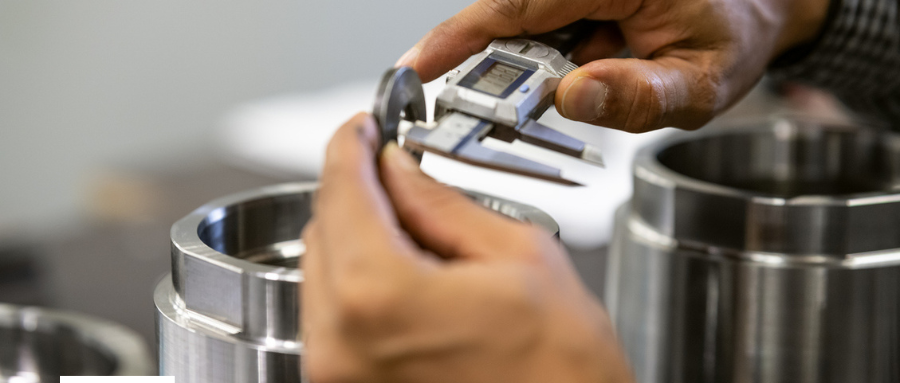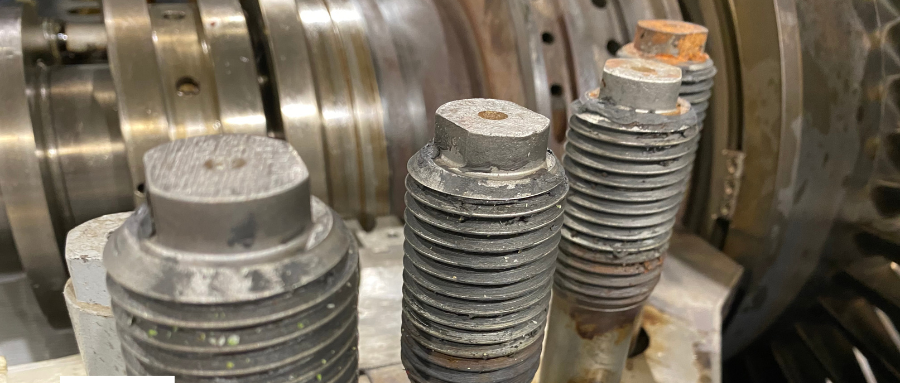Why Choose PTFE for Your Sealing Project?
The Critical Role of Material Selection in Fluid Sealing
In the fluid sealing industry, the choice of material is more than just a technical decision — it’s a critical factor that can determine the success or failure of an entire project. The material you select directly impacts your seals' longevity, reliability, and overall effectiveness. A well-chosen material ensures that seals can withstand the demanding conditions of the application and minimizes downtime, maintenance costs, and potential failures.
Among the vast range of materials available, PTFE (polytetrafluoroethylene), widely recognized by its brand name Teflon™ has established itself as a top contender. Its popularity is no accident; PTFE boasts a unique combination of properties that make it exceptionally versatile across various sealing applications. From its unparalleled chemical resistance to its ability to perform under extreme temperatures, PTFE seals consistently meet the rigorous demands of various industries, including chemical processing, oil and gas, pharmaceuticals, and more.
However, what truly sets PTFE apart is its adaptability. By incorporating different fillers into PTFE, the material’s properties can be fine-tuned to enhance performance in specific environments and applications. This customization capability allows for the creation of seals that are precisely tailored to the unique challenges of each project, providing solutions that standard materials simply cannot match.
In this blog post, we’ll delve deeper into why PTFE is the material of choice for many sealing projects and explore the different fillers that can be added to PTFE to further elevate its performance.
The Advantages of PTFE Seals
PTFE seals offer numerous advantages, making them an ideal choice for demanding applications while ensuring long-lasting durability and performance. Consider the following characteristics:
- Exceptional Chemical Resistance: PTFE’s unparalleled resistance to a wide range of chemicals makes it a go-to material in environments where exposure to corrosive substances is inevitable. Whether dealing with acids, bases, solvents, or other harsh chemicals, PTFE maintains its integrity, ensuring reliable sealing performance.
- Wide Temperature Range: One of PTFE’s most remarkable properties is its ability to retain its characteristics across extreme temperatures. Whether you’re working in the freezing cold of -200°C (-328°F) or the scorching heat of up to 260°C (500°F), PTFE seals will perform consistently, making them ideal for diverse applications.
- Non-Stick Properties: With a very low coefficient of friction, PTFE’s non-stick nature helps reduce wear and tear on sealing components. This property also makes it easier to install, remove, or replace seals, saving time and reducing maintenance costs.
- Low Permeability: PTFE’s low permeability to gases and liquids ensures a tight seal, effectively preventing leaks. This feature is particularly beneficial in applications where even the smallest leaks could lead to significant issues.
- Electrical Insulation: For applications involving electrical components, PTFE’s excellent insulating properties provide an added layer of safety. Its ability to resist electrical currents makes it suitable for seals that must maintain insulation while being exposed to harsh conditions.
- Durability and Longevity: PTFE is inherently resistant to aging, degradation, and wear, ensuring that your seals will last longer and perform reliably throughout their lifespan. This durability makes PTFE a cost-effective solution for sealing projects.
Enhancing PTFE Seals with Fillers
While PTFE’s inherent properties are impressive, certain applications may demand enhanced performance. This is where fillers come into play. By incorporating various fillers, PTFE seals can be customized to meet specific requirements, offering a tailored solution for your sealing needs.
1. Glass Fibers: Adding glass fibers to PTFE boosts its mechanical strength and dimensional stability. This combination enhances the seal’s ability to resist deformation under load, making it ideal for applications where maintaining shape is critical.
Application: In hydraulic systems, particularly in heavy machinery such as construction equipment or industrial presses, seals are subjected to high pressures and mechanical loads.
2. Graphite: Graphite-filled PTFE improves thermal conductivity and lubrication properties, reducing friction and wear. This makes it perfect for applications involving high sliding speeds. Additionally, higher-density grades of graphite-filled PTFE are excellent for sealing water and gas.
Application: In high-speed rotating equipment, such as pumps, compressors, or turbines, seals are exposed to friction and heat generated by rapid movement.
3. Bronze: Bronze fillers significantly increase PTFE’s wear resistance and load-bearing capacity. If your application demands higher strength and durability, bronze-filled PTFE is the way to go.
Application: In automotive engines, seals must withstand high temperatures, pressures, and continuous operation without significant wear. It’s also excellent for water processing as well as dams or hydro where load-bearing bushings are required.
4. Carbon: Carbon fillers enhance PTFE’s thermal and electrical conductivity while also improving wear resistance and reducing friction. This filler is particularly effective in dynamic sealing applications and is excellent for sealing water.
Application: Aerospace applications, such as actuators and control systems, require seals that can perform in extreme conditions, including rapid temperature changes and exposure to high pressures.
5. Aramid Fibers: Incorporating aramid fibers (such as Kevlar) into PTFE adds strength and resistance to abrasion and impact. This makes it suitable for heavy-duty applications where the seals must withstand substantial wear and tear.
Application: Mining equipment (such as drills, crushers, and conveyors) operates in harsh, abrasive environments where seals must withstand heavy loads and frequent impacts.
6. Molybdenum Disulfide: For applications involving high sliding or rotating movements, molybdenum disulfide is an excellent filler. It improves the lubricating properties of PTFE, ensuring smoother operation and reducing friction.\
Application: Industrial mixers, used in chemical processing or food production, involve rotating shafts that require seals capable of handling high sliding movements while minimizing friction.
Conclusion
Choosing the right material for your sealing project is crucial to ensure performance and longevity. PTFE’s unique properties in combination with the versatility of different fillers, make it an outstanding choice for many applications. Whether you need chemical resistance, temperature stability, or enhanced mechanical strength, PTFE seals can be tailored to meet your needs.
At Ergoseal, we specialize in providing high-quality PTFE seals customized to your requirements. Contact us today to learn more about how our PTFE sealing solutions can enhance your project.


.png)




.png)
.png)
.png)




